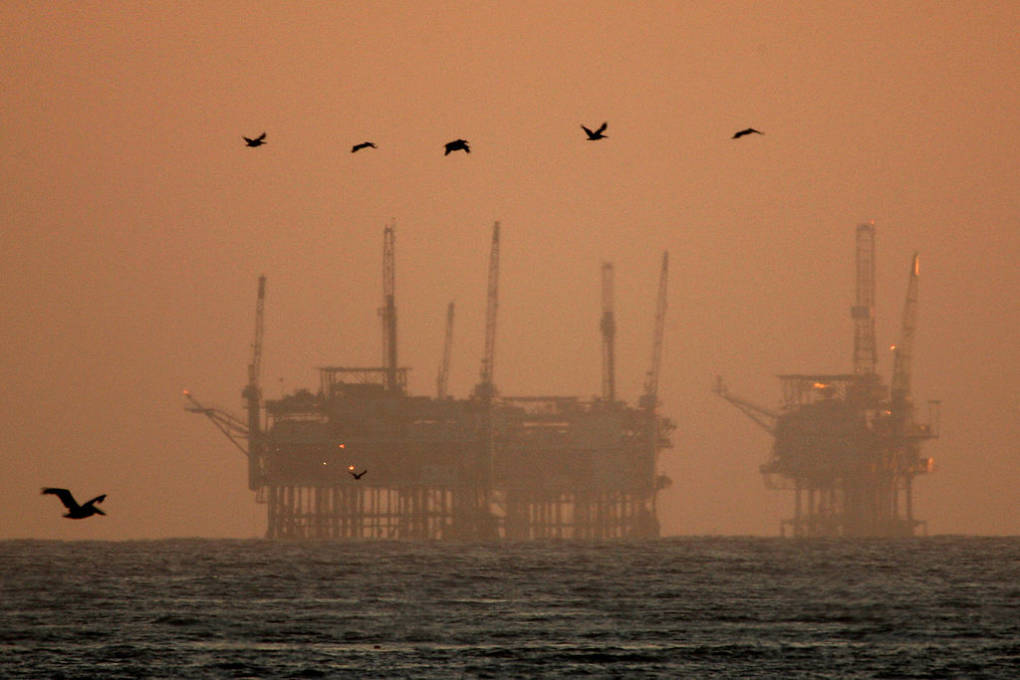Meanwhile, environmental organizations are alarmed and stress that it could place wildlife and coastal communities at risk of a spill.
“The proposal would expose the Arctic waters — our last undeveloped ocean —to drilling, put the Atlantic coast on the chopping block for the first time since 1983, open the Pacific coast — which has not seen federal drilling for decades, and further threaten the debilitated Gulf of Mexico,” said a statement signed by 64 organizations and environmental groups.
Last April, Trump directed Zinke to review the Obama administration’s five-year plan. The areas reviewed included portions of the Pacific, Arctic and Atlantic oceans where the previous administration had not allowed drilling.
The Trump administration has touted the change as an “America-first offshore energy strategy.” Before signing the order, Trump said “renewed offshore energy production will reduce the cost of energy, create countless new jobs, and make America more secure and far more energy independent.”
Legal experts have raised questions about whether the Trump administration actually has the power to change portions of Obama’s policies, such as reversing the Arctic leasing ban.
Shortly before Obama left office he “used an obscure provision of the 1953 Outer Continental Shelf Lands Act to issue what he called a permanent ban on offshore drilling in large parts of the Arctic and Atlantic Oceans,” as NPR has reported. The Obama administration said it could not be reversed, because there is no provision to do so in that law.
Trump’s executive order explicitly mentions the Outer Continental Shelf Lands Act and says it is simply modifying the text of the Obama memorandum. Interior’s Principal Deputy Assistant Secretary Kate MacGregor told reporters Thursday that she believes previous protections were “overturned.”
And as NPR previously reported, it’s also not clear how much new drilling would actually happen even if it is allowed. The current price of oil is about $60 a barrel — fairly low — and “offshore drilling is an expensive endeavor, especially in places like the Arctic,” as NPR has said. MacGregor said she is expecting companies to be “very interested” in new lease offerings.
Separately, the Trump administration is seeking to relax a rule requiring equipment used by oil and gas companies in offshore drilling to be certified by third-party inspectors. “Now they’re going to use some industry-set recommendations — recommended practices instead of these third-party inspectors,” Inside Energy executive editor Alisa Barba told NPR.
“It is time for a paradigm shift in the way we regulate the [outer continental shelf],” said Bureau of Safety and Environmental Enforcement Director Scott Angelle. “There was an assumption made previously that only more rules would increase safety, but ultimately it is not an either/or proposition. We can actually increase domestic energy production and increase safety and environmental protection.”
That proposed rule appeared in the Federal Register last Friday and is open to public comment until Jan. 29.
The BSEE, the federal regulator of the offshore energy industry, was set up in response to 2010’s Deepwater Horizon oil spill, which dumped millions of gallons of oil into the Gulf of Mexico and killed 11 people.
Copyright 2018 NPR. To see more, visit http://www.npr.org/.
9(MDAxOTAwOTE4MDEyMTkxMDAzNjczZDljZA004))

9(MDAxOTAwOTE4MDEyMTkxMDAzNjczZDljZA004))